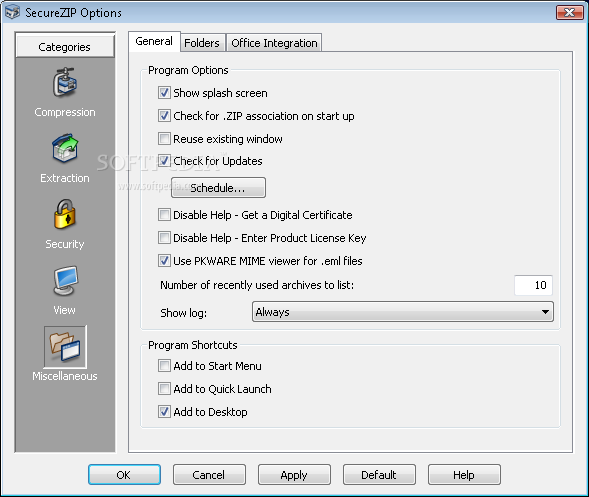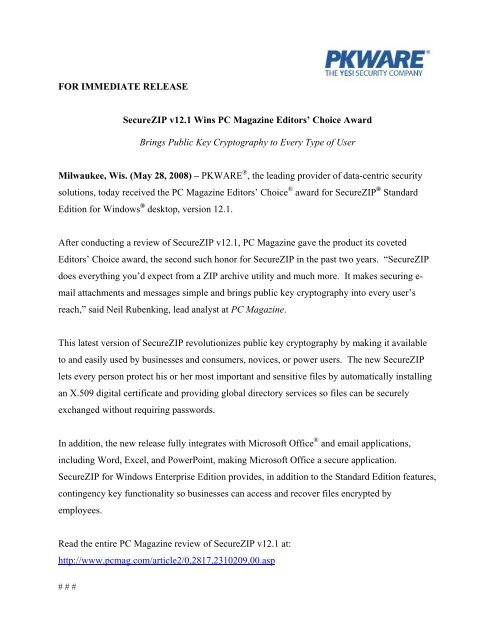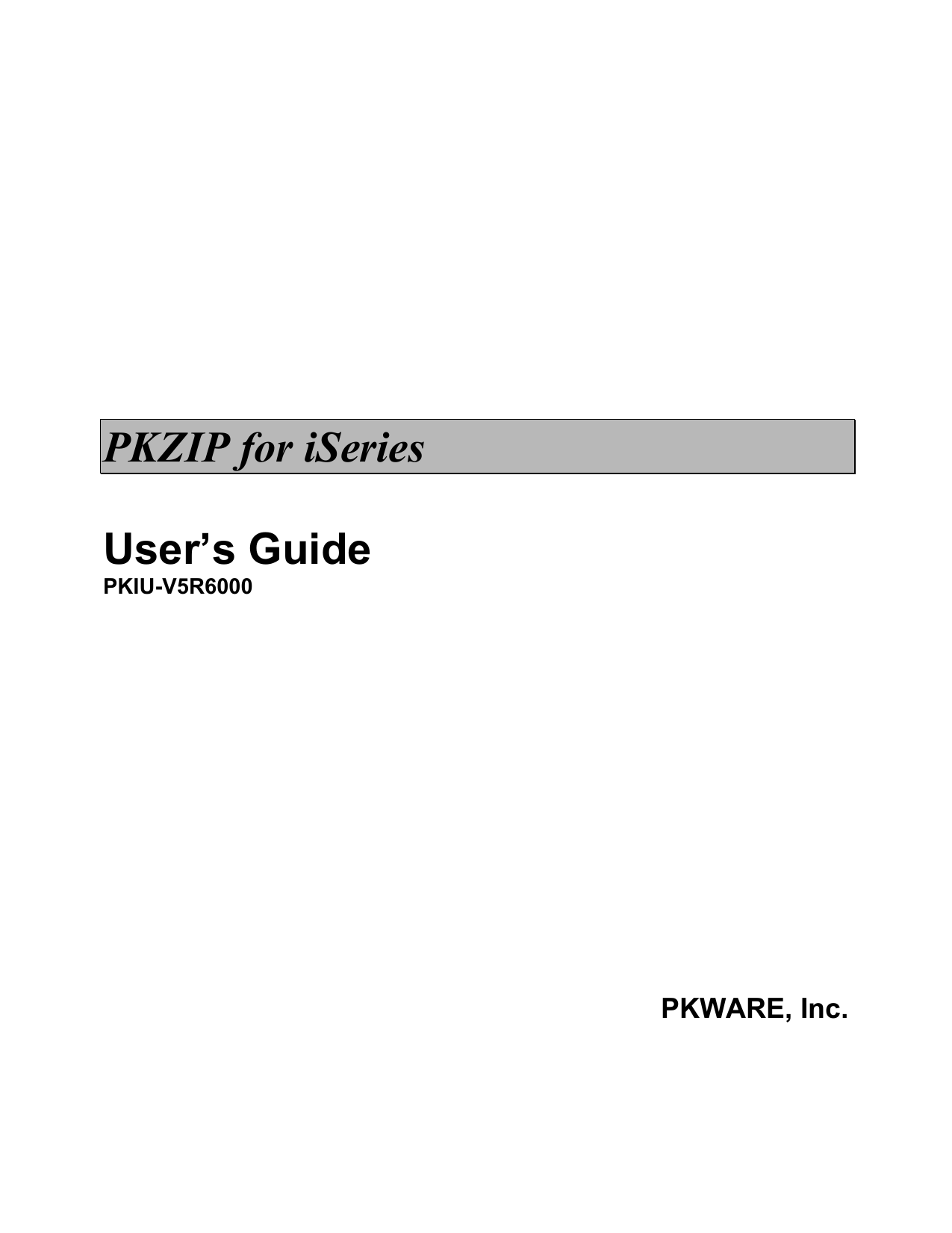

- #Pkware securezip review archive#
- #Pkware securezip review registration#
- #Pkware securezip review verification#
- #Pkware securezip review zip#
- #Pkware securezip review windows#
DOS version of PKZIP 2.50 was released on, as its final MS-DOS product.
#Pkware securezip review windows#
PKZIP 2.50 (released on April 15, 1998) was the first version released for Windows 3.1, 95, NT platforms.It was a version of PKZIP 2.04g licensed to IBM. Registered version included PKUNZJR, PK Safe ANSI, PKCFG utilities.
#Pkware securezip review verification#
A new Authenticity Verification (AV) signature format was used. PKZIP 2.x also supported spanning archives to multiple disk, which simply split the files into multiple pieces, and using volume label on each drive to differentiate each other. zip) extension are in PKZIP 2.x format, and utilities to read and write these files are available on all common platforms. The resulting file format has since become ubiquitous on Microsoft Windows and on the Internet – almost all files with the. This new version dispensed with the miscellaneous compression methods of PKZIP 1.x and replaced them with the deflate algorithm (although several levels of deflation were provided by the program). PKZIP 2.04g (released in January 1993): By the time the release was ready, fake 2.x releases were circulating, some of them malware, so an untainted version number was chosen instead of 2.0.It was supposed to be quickly followed by a final PKZIP 2 release, but there were numerous delays. PKZIP 1.93a (released in October 1991): An alpha version that introduced a new compression method which Katz called " deflating".Removed tools included BIOSFIX, REZIP, MAKESFX. EAX register was always saved on 80386 or above CPU. Imploding was up to 5X faster and compression ratio was improved over 1.02. PKZIP 1.10 (released on March 15, 1990): New features included authenticity verification, "mini" PKSFX self-extracting module, integrating self-extracting module into ZIP2EXE, ability to save & restore volume labels.
#Pkware securezip review archive#
OS/2 version added ZIP2EXE and 2 self-extracting archive headers.
#Pkware securezip review zip#

In addition to PKZIP and PKUNZIP, it also included ZIP2EXE, which required an external self-extracting executable header created by MAKESFX from the PKZIP executable package.
#Pkware securezip review registration#
The first version was released in 1989, as a DOS command-line tool, distributed under shareware model with a US$25 registration fee (US$47 with manual).

ARC files, users began recompressing any old archives that were currently stored in. Led by BBS sysops who refused to accept or offer files compressed as. Although SEA won the suit, it lost the compression war, as the user base migrated to PKZIP as the compressor of choice. The announcement had been made following the lawsuit between SEA and PKWARE, Inc. The development of PKZIP was first announced in the file SOFTDEV.DOC from within the PKPAK 3.61 package, stating it would develop a new and yet unnamed compression program. Cooper's DWC, LHarc by Haruhiko Okomura and Haruyasu Yoshizaki and ARJ which stands for "Archived by Robert Jung". Other archivers also appeared during the 1980s, including ARC by System Enhancement Associates, Inc. These archives could optionally be passed through a stream compressor utility, such as compress and others. These utilities were designed to gather a number of separate files into a single archive file for easier copying and distribution. They include the Unix utilities ar, shar, and tar. By the 1970s, file archiving programs were distributed as standard utilities with operating systems.


 0 kommentar(er)
0 kommentar(er)
